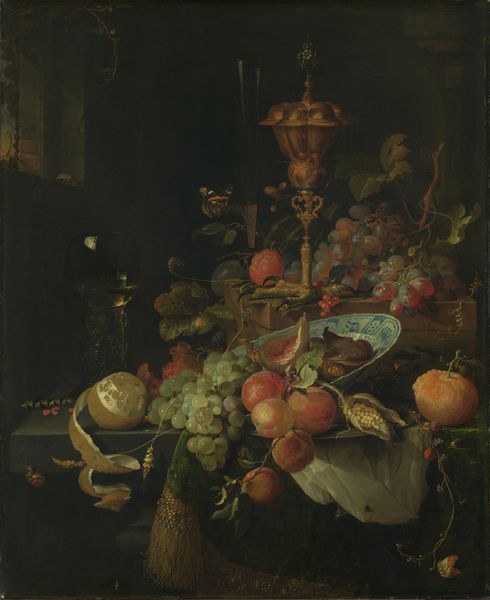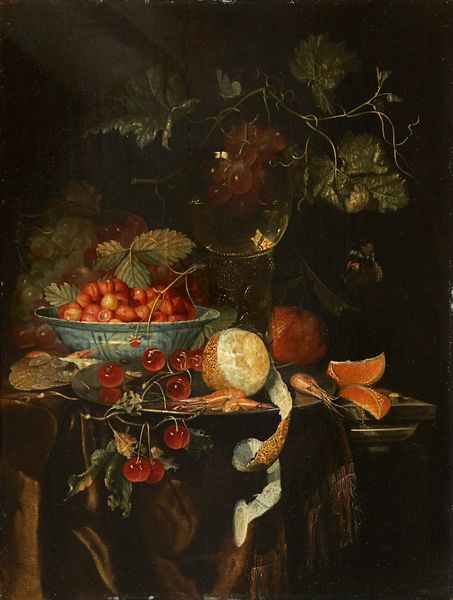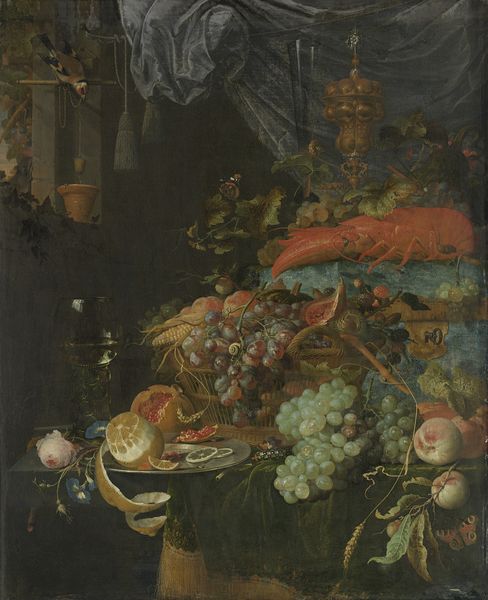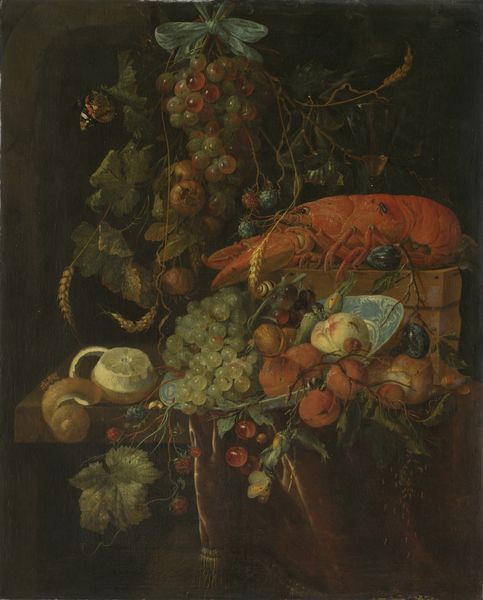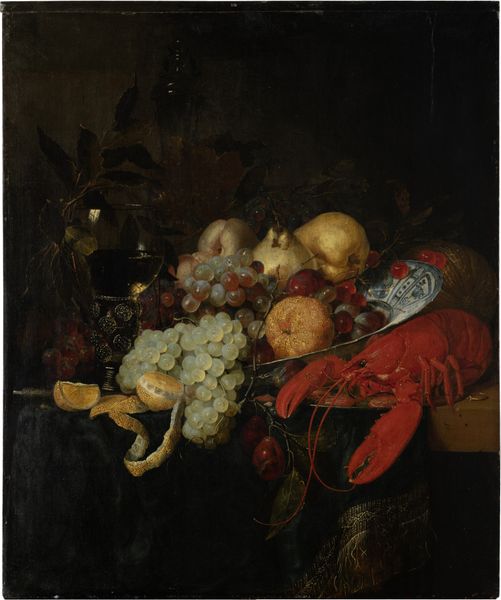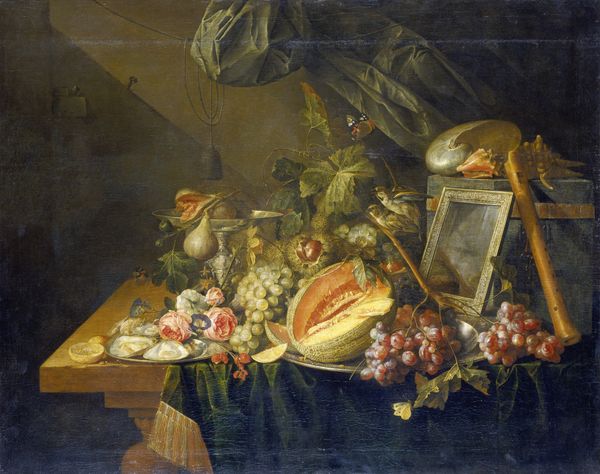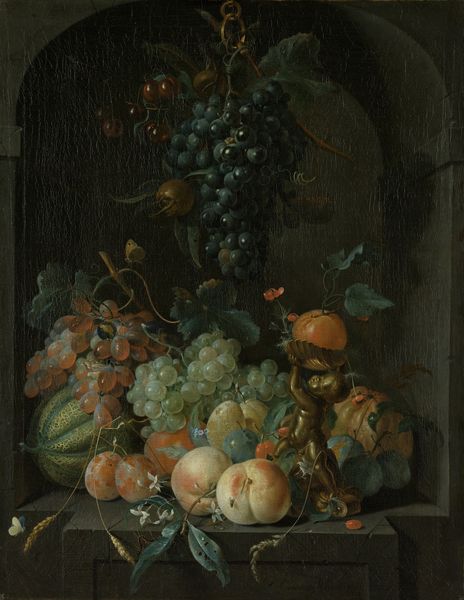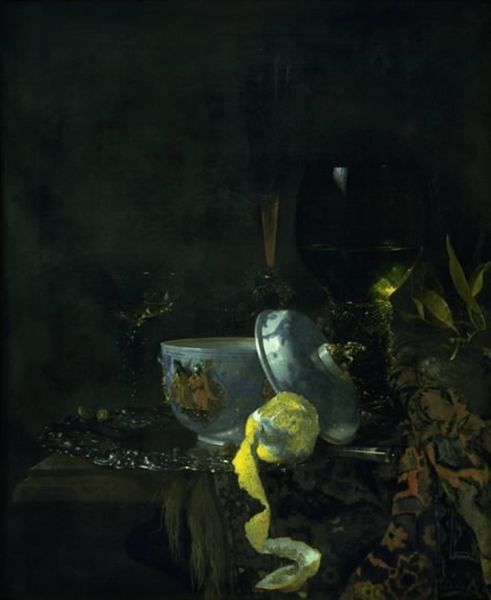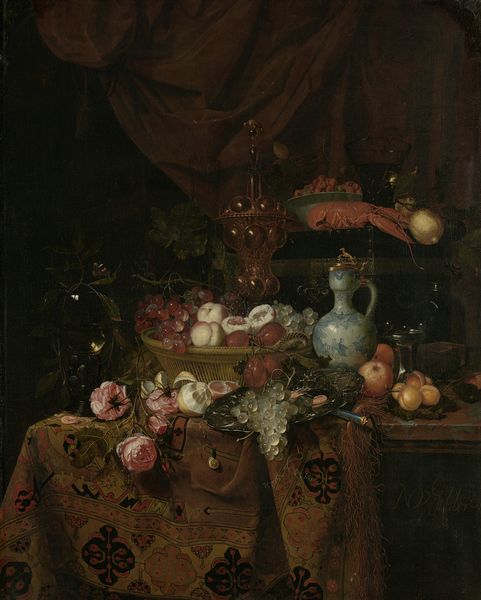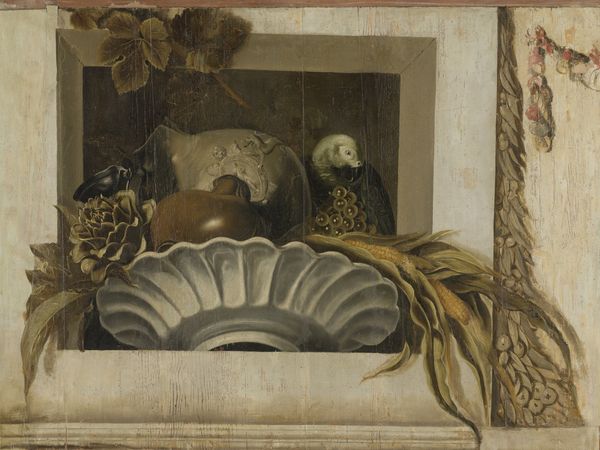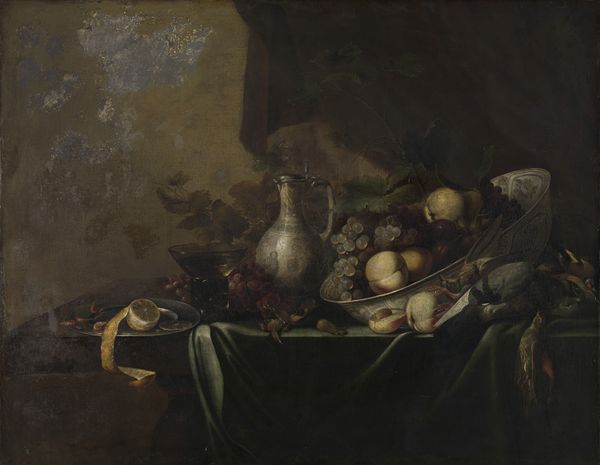
oil-paint
#
baroque
#
dutch-golden-age
#
oil-paint
#
oil painting
#
intimism
#
realism
Dimensions: 67 cm (height) x 53 cm (width) (Netto), 85 cm (height) x 71 cm (width) x 8 cm (depth) (Brutto)
Curator: Let’s discuss Nicolaes van Gelder’s "Still Life," created around 1672. What's your first take on it? Editor: It feels very grounded, somehow. The composition, pressed into this dark niche, gives it a solidity. You can almost smell the wine and overripe fruit. Curator: It’s a wonderful example of Dutch Golden Age still life, an era reflecting prosperity, yet simultaneously grappling with anxieties surrounding trade, empire and wealth. The composition is crowded, featuring fruit, seafood, and a wine glass all illuminated against a somber backdrop. I see ideas around luxury and decay intertwining. Editor: Absolutely. And look at how the artist used oil paint. There’s an almost palpable realism to the textures. The glisten of the grapes, the rough shell of the crawfish, all rendered meticulously. One can easily imagine van Gelder spending days layering and glazing to achieve this level of verisimilitude. I wonder about his studio, his apprentices and process... Curator: Indeed, considering the social and economic landscape of the Dutch Golden Age adds another layer to this "Still Life." The luxury items represented speak to growing materialism and the global networks established during that era. Think about what these goods represented to the artist, the patrons, and the society in which they circulated. There are undertones related to colonialism that are important to recognize here. Editor: Precisely. Luxury goods have real costs, even then. Knowing about van Gelder’s place within this context informs how we engage with the artwork, not just in terms of appreciating his craftsmanship, but also how he contributed to constructing social norms related to materiality and excess. Curator: Well said. Reflecting on van Gelder’s “Still Life,” it is clear that seemingly simple representations carry rich narratives of commerce, class, and consumption. Editor: Yes. It shows how attentiveness to an artist’s process brings this seemingly ‘simple’ scene into dialogue with pressing global concerns that remain urgent to this day.
Comments
No comments
Be the first to comment and join the conversation on the ultimate creative platform.

